The name Norris is believed to have originated from a place in Normandy, France called "Norreis." It is also believed that the name was brought to England by the Normans during the Norman Conquest in 1066. The name has since spread to other parts of the world, including the United States, Canada, Australia, and New Zealand.

The Meaning of Norris
The name Norris is derived from the Old French word "norreis," which means "nurseryman" or "caretaker of young children." This suggests that the name may have originally been a occupational surname for someone who worked in a nursery or cared for children.

Notable People with the Name Norris
Over the years, there have been many notable people with the name Norris. One of the most famous is Chuck Norris, an American actor and martial artist who became famous for his roles in action movies like "Delta Force" and "Walker, Texas Ranger."

Another notable person with the name Norris is Gail Norris, an American television producer who has worked on shows like "The West Wing" and "24."

The Norris Family Crest
The Norris family crest features a red shield with a gold lion rampant on top. The crest also includes a motto that reads "Non Revertar Inultus," which means "I will not return unavenged."

Popularity of the Name Norris
The popularity of the name Norris has fluctuated over time. According to the Social Security Administration, the name was most popular in the early 1900s, but has since declined in popularity. In 2020, the name was ranked as the 3,675th most popular name for boys in the United States.

Final Thoughts
The name Norris has a rich history and has been used by many notable people over the years. Whether you are looking to name your child Norris or are simply interested in the history of surnames, the story behind this name is definitely worth exploring.
Related video of Origin Of The Name Norris

The United States of America is a vast country with 50 states, each with its own unique name. The origin of these state names varies from state to state, with some being named after prominent people, while others are named after geographical features or Native American tribes. In this article, we will delve into the fascinating history behind the origin of state names in the USA.
Alabama

The state of Alabama is named after the Alabama River, which in turn was named after the Native American tribe that inhabited the region. The name "Alabama" is believed to have originated from the Choctaw language and means "thicket-clearers" or "vegetation-gatherers."
Alaska

The state of Alaska gets its name from the Aleut word "Alyeska," which means "great land" or "mainland." The region was originally known as Russian America when it was under Russian control, but it was later sold to the United States in 1867.
Arizona
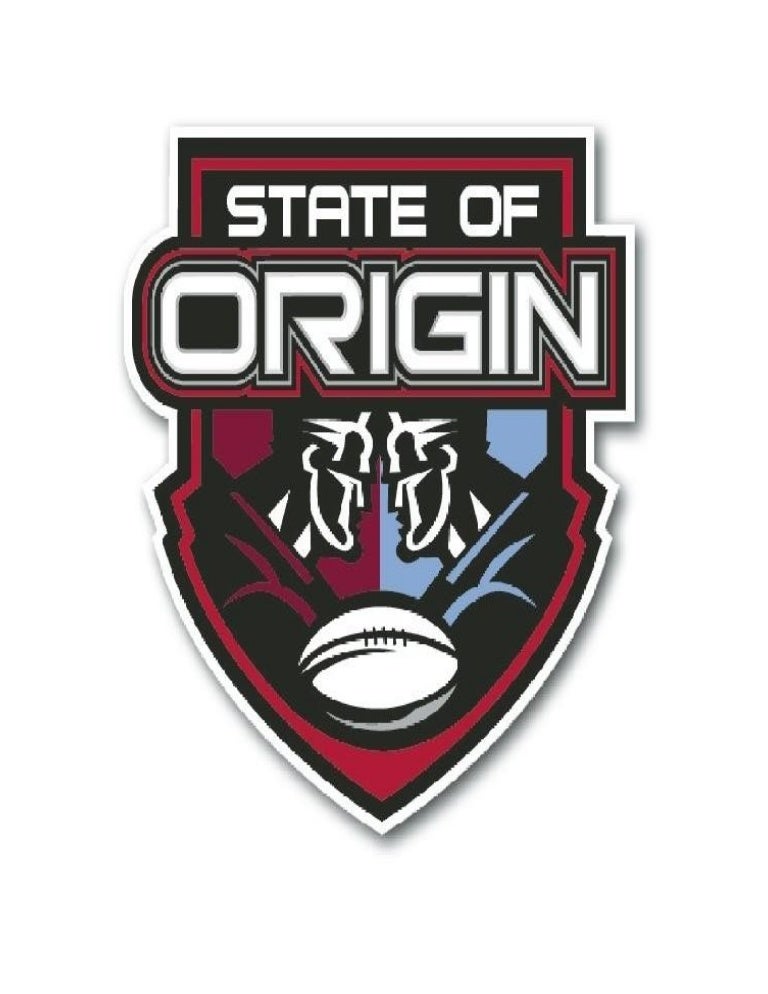
The state of Arizona is named after the Spanish word "arizonac," which means "small spring." The name was originally used to describe an area near the Mexican border that was rich in silver deposits. The state was officially named Arizona in 1912 when it became the 48th state to join the Union.
Arkansas

The state of Arkansas is named after the Native American tribe that lived in the region known as the Quapaw. The name "Arkansas" is derived from the French interpretation of the Quapaw word "Akansa," which means "land of downriver people."
California
The state of California is named after a mythical island paradise that was described in a popular Spanish novel. The name "California" is believed to have originated from the fictional Queen Calafia, who ruled over a land of gold and precious stones.
Colorado
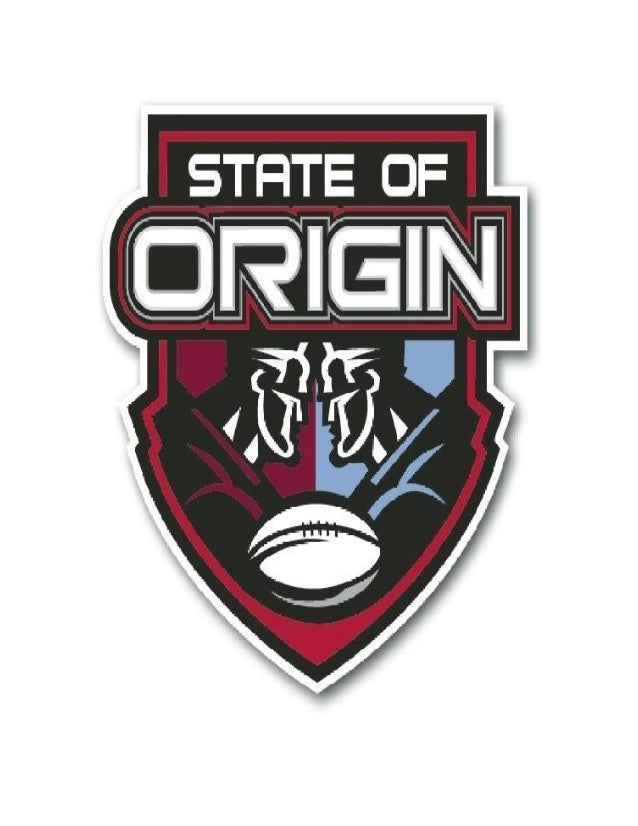
The state of Colorado is named after the Colorado River, which flows through the region. The river was named by Spanish explorers who noted the reddish-brown color of the water caused by the sediment in the riverbed.
Connecticut
The state of Connecticut is named after the Connecticut River, which flows through the region. The name "Connecticut" is derived from the Native American word "quinnehtukqut," which means "beside the long tidal river."
Delaware

The state of Delaware is named after Lord De La Warr, who was the governor of the Virginia Colony in the early 1600s. The region was originally part of the Virginia Colony but was later granted separate status and named after Lord De La Warr.
Florida
The state of Florida is named after the Spanish word "florido," which means "full of flowers." The name was originally given to the region by Spanish explorers who were struck by the abundance of colorful flowers they encountered.
Georgia

The state of Georgia is named after King George II of England, who granted a charter to establish the colony in 1732. The name "Georgia" was chosen to honor the king and to reflect the English influence on the region.
Hawaii
The state of Hawaii is named after the largest island in the archipelago, which was known as the "Hawaiian Islands." The name "Hawaii" is believed to have originated from the Proto-Polynesian word "hawaiki," which means "place of the gods."
Idaho

The state of Idaho is named after the Native American tribe known as the "Idahoans" or "Ee-dah-how." The name "Idaho" is believed to have been made up by a mining lobbyist who claimed it was a Shoshone word meaning "gem of the mountains."
Illinois

The state of Illinois is named after the Illiniwek tribe, who were the dominant Native American group in the region before European settlement. The name "Illinois" is believed to mean "tribe of superior men" in the Algonquian language.
Indiana

The state of Indiana is named after the Native American tribe known as the "Indians" or "Hoosiers." The name "Indiana" is believed to mean "land of the Indians" or "land of the hoosiers," although the origin of the term "hoosier" is unclear.
Iowa
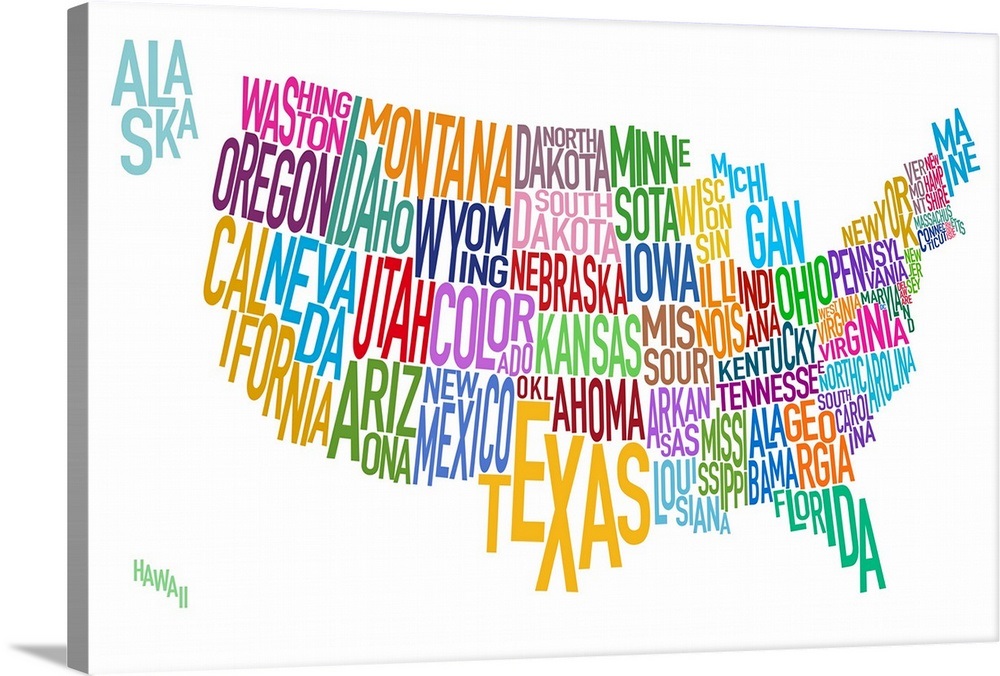
The state of Iowa is named after the Native American tribe known as the "Ioway" or "Baxoje." The name "Iowa" is believed to mean "sleepy ones" or "drowsy ones" in the Sioux language.
Kansas
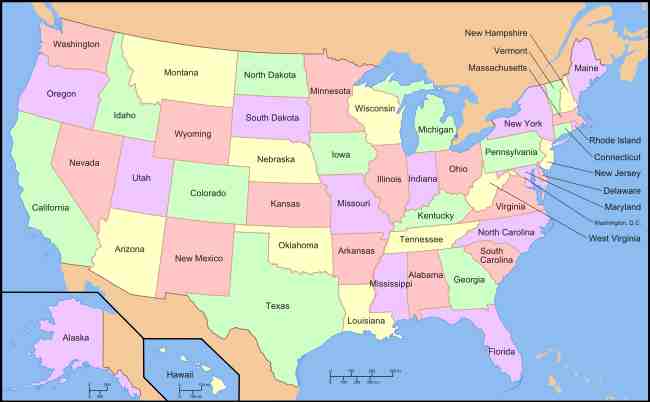
The state of Kansas is named after the Kansa tribe, who were the dominant Native American group in the region before European settlement. The name "Kansas" is believed to mean "people of the wind" or "people of the south wind" in the Sioux language.
Kentucky
The state of Kentucky is named after the Kentucky River, which flows through the region. The name "Kentucky" is derived from the Native American word "ken-tah-ten," which means "land of tomorrow."
Louisiana
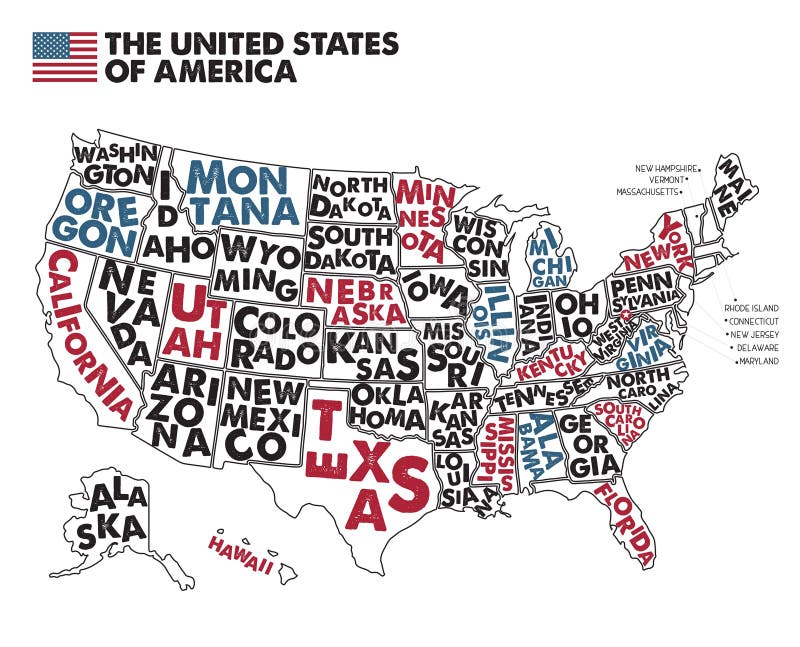
The state of Louisiana is named after King Louis XIV of France, who claimed the region for France in the late 1600s. The region was later sold to the United States in 1803 as part of the Louisiana Purchase.
Maine
The state of Maine is named after the province of Maine in France. The name "Maine" is believed to have originated from the ancient Gaulish word "magos," which means "great" or "powerful."
Maryland
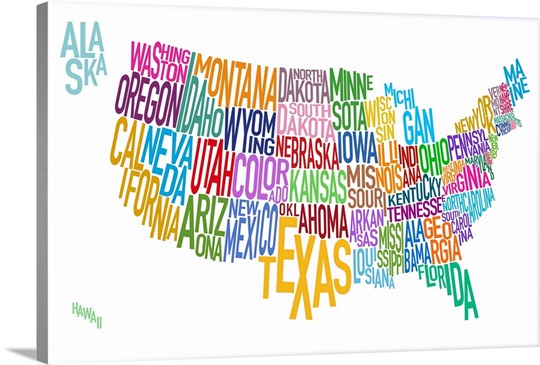
The state of Maryland is named after Queen Henrietta Maria, who was the wife of King Charles I of England. The region was originally granted to George Calvert, the first Lord Baltimore, as a refuge for Catholics in the New World.
Massachusetts

The state of Massachusetts is named after the Native American tribe known as the "Massachusett." The name "Massachusetts" is believed to mean "at or about the great hill" in the Massachusett language.
Michigan
The state of Michigan is named after Lake Michigan, which was named by French explorers. The name "Michigan" is believed to mean "large water" or "great lake" in the Ojibwe language.
Minnesota
The state of Minnesota is named after the Dakota word "Mnisota," which means "cloudy water" or "sky-tinted water." The name refers to the Minnesota River, which flows through the region.
Mississippi
The state of Mississippi is named after the Mississippi River, which flows through the region. The name "Mississippi" is derived from the Ojibwe word "misi-ziibi," which means "great river" or "gathering-in of all the waters."
Missouri
The state of Missouri is named after the Missouri River, which flows through the region. The name "Missouri" is believed to mean "town of the large canoes" or "people with wooden canoes" in the Siouan language.
Montana
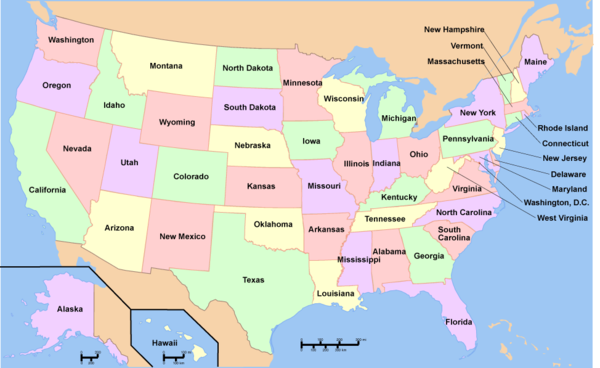
The state of Montana is named after the Spanish word "montaña," which means "mountain." The region is known for its rugged mountain ranges, including the Rocky Mountains.
Nebraska
The state of Nebraska is named after the Native American tribe known as the "Niobrara" or "Nebraskier." The name "Nebraska" is believed to mean "flat water" or "broad water" in the Otoe language.
Nevada

The state of Nevada is named after the Spanish word "nevada," which means "snowy." The name refers to the snow-capped peaks of the Sierra Nevada mountain range that runs through the region.
New Hampshire

The state of New Hampshire is named after the English county of Hampshire. The name "Hampshire" is believed to mean "home of the tribe of Hamtun" or "settlement by the sea" in the Old English language.
New Jersey
The state of New Jersey is named after the English Channel Island of Jersey. The region was originally part of the Dutch colony of New Netherlands but was later taken over by the English and named after their home island.
New Mexico

The state of New Mexico is named after the country of Mexico. The region was originally part of the Spanish colony of New Spain but became a separate territory of the United States in 1850.
New York

Related video of Origin Of State Names In The USA
The origin of man and woman is a topic that has fascinated scientists and historians for centuries. The question of how humans came to be on this earth has been debated for centuries, and many theories have been proposed to explain our origins. In this article, we will discuss some of the most widely accepted theories of the origin of man and woman.
Creationism

One of the most well-known theories of the origin of man and woman is creationism. This theory states that humans were created by a divine power or God. Creationism is often associated with religious beliefs and is commonly held by those who believe in the Bible. According to the Bible, God created the first humans, Adam and Eve, in the Garden of Eden. This theory has been debated for centuries and remains a topic of controversy among scientists and religious scholars alike.
Evolution

Another widely accepted theory of the origin of man and woman is evolution. This theory states that humans evolved from apes over millions of years. The concept of evolution was first proposed by Charles Darwin in the 19th century, and since then, it has become one of the most widely accepted scientific theories. According to the theory of evolution, humans share a common ancestor with apes and other primates. Over time, humans evolved and developed unique characteristics that set us apart from other animals.
The Big Bang Theory
The Big Bang Theory is another theory that attempts to explain the origin of man and woman. This theory states that the universe began as a single, infinitely dense point and then expanded rapidly in a process known as the Big Bang. According to this theory, all matter in the universe was created in the Big Bang, including the first living organisms. While the Big Bang Theory does not specifically address the origin of man and woman, it does provide a framework for understanding the origins of the universe.
Religious Beliefs

Many religions have their own theories about the origin of man and woman. For example, Hinduism teaches that humans were created by the gods, while Islam teaches that humans were created by Allah. These religious beliefs have been passed down through generations and continue to shape the way people understand the origins of humanity.
The Role of Science

While religion and philosophy have provided many theories about the origin of man and woman, science has played a crucial role in understanding our origins. Through the use of genetics, archaeology, and other scientific fields, scientists have been able to uncover new information about our past. For example, DNA analysis has revealed that humans share a common ancestor with chimpanzees, providing evidence for the theory of evolution.
Conclusion
The origin of man and woman is a topic that has fascinated scientists, historians, and philosophers for centuries. While there are many theories about our origins, the most widely accepted theories are creationism, evolution, and the Big Bang Theory. Religious beliefs also play a significant role in shaping our understanding of humanity's beginnings. Ultimately, the question of how we came to be on this earth remains a topic of debate and controversy, and new discoveries and theories will continue to emerge in the years to come.
Related video of Origin Of Man And Woman
Graduation ceremonies are steeped in tradition, and one of the most recognizable symbols of graduation is the cap and gown. But where did this tradition come from? Let's take a closer look at the history of the graduation cap and gown.
The Middle Ages
The tradition of wearing academic robes dates back to the Middle Ages, where scholars would wear long robes and hoods to keep warm in the cold, drafty university buildings. The hoods were designed to cover the head and shoulders, and the flowing robes were meant to keep the wearer warm while also showing off their status as scholars.
The Oxford Cap
The graduation cap, also known as the mortarboard, has its origins in the Oxford cap. This cap was worn by students at Oxford University in the 15th century, and was a simple cloth hat with a tassel on top. The tassel was used to secure the cap to the head, as the cap was typically worn without a chin strap.
The Evolution of the Gown

The gown has gone through many changes over the centuries. Originally, it was a long, flowing robe that covered the entire body, but over time it became more fitted and tailored. The addition of sleeves and a slit up the front made it easier for the wearer to move around, while still maintaining the traditional look of the gown.
The Modern Cap and Gown

The modern graduation cap and gown that we know today has its roots in the early 20th century. In 1902, the Intercollegiate Commission standardized academic regalia, including the cap and gown, in order to create a more uniform look across all universities and colleges. This standardization helped to cement the cap and gown as a symbol of academic achievement.
The Significance of the Cap and Gown

The cap and gown are more than just symbols of academic achievement. They also represent the hard work and dedication that students have put in to earn their degrees. The cap and gown are a reminder of the sacrifices that students have made in order to reach this milestone in their lives.
Conclusion
The graduation cap and gown have a long and rich history, dating back to the Middle Ages. While the styles and designs have changed over time, the cap and gown remain a symbol of academic achievement and hard work. Whether you're a student, a parent, or a proud graduate, the cap and gown will always hold a special place in our hearts.
Related video of Origin Of Graduation Cap And Gown
Birthday celebrations are a common tradition in many cultures around the world. It is a special day for individuals to celebrate their birth and the beginning of another year of life. However, have you ever wondered about the origin of birthday celebrations? Here is a brief history of how it all started.
The Beginning of Birthday Celebrations

The concept of celebrating birthdays can be traced back to ancient civilizations such as the Egyptians, Greeks, and Romans. The Egyptians believed that the Pharaohs were reborn as gods and celebrated their "birth" into the afterlife. The Greeks celebrated the birth of Artemis, the goddess of the moon, and the Romans celebrated the birthdays of emperors and gods.
The Early Christian Church

During the early Christian church, birthdays were not celebrated as they were seen as a pagan practice. It was only until the fourth century that birthdays were recognized as a celebration of life and the birth of Christ. The date of December 25th was chosen as the birth of Christ, and it became a widely celebrated holiday.
The Middle Ages

During the Middle Ages, birthday celebrations became more common among the upper class. It was a time for feasting and gift-giving, and it was believed that the person celebrating their birthday would receive good luck for the year ahead. However, birthdays were still not celebrated among the lower classes.
The Industrial Revolution

With the rise of the Industrial Revolution, birthdays became more widespread and accessible to all classes. The production of greeting cards, cakes, and other birthday-themed items became more affordable and available to the general public. It was also during this time that the tradition of blowing out candles on a birthday cake began.
Modern-Day Birthday Celebrations

Today, birthday celebrations are a common tradition in many countries around the world. It is a time for family and friends to come together and celebrate another year of life. The celebration usually involves a birthday cake, candles, gifts, and well-wishes for the year ahead.
Conclusion
Birthdays have come a long way since their origins in ancient civilizations. It has evolved into a widespread tradition that is celebrated in many cultures around the world. Whether it's a small gathering with family or a grand celebration with friends, birthdays are a time to be thankful for another year of life.